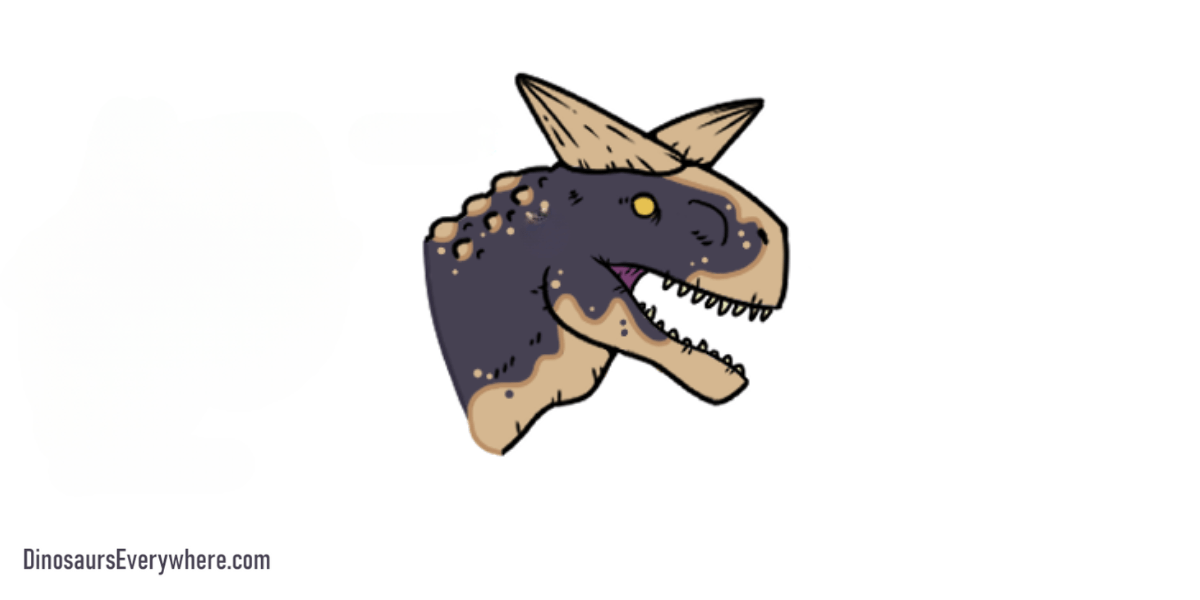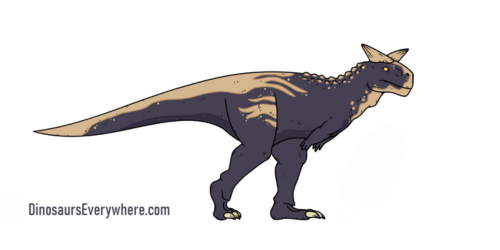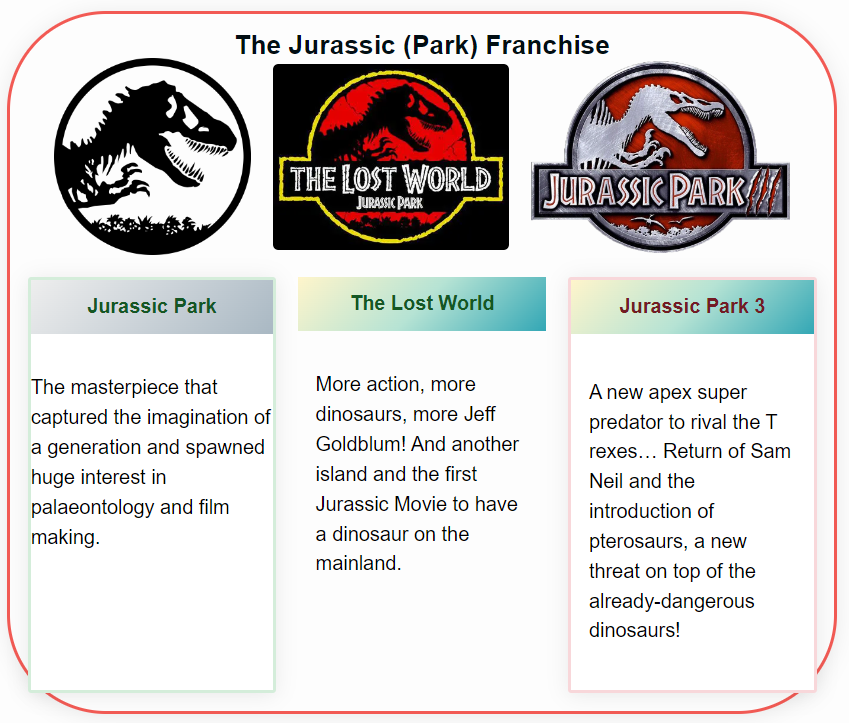Discovery and Classification of Carnotaurus
The discovery of Carnotaurus, a notable member of the theropod dinosaurs, marked a significant milestone in our understanding of prehistoric life. Unearthed in Argentina by José Bonaparte in 1985, the almost complete skeleton of Carnotaurus sastrei provided a unique glimpse into the Late Cretaceous period, particularly due to its distinctive bull-like horns and short arms.
This meat-eating dinosaur, whose name literally means “meat-eating bull,” has been a subject of fascination and study, contributing valuable insights into the diversity and adaptations of theropods- the family of two-legged predators which includes Tyrannosaurs, Spinosaurs, raptors and even birds.
Its fossils, showcasing both fearsome and unique attributes, are prominently displayed in the Argentine Museum of Natural Sciences, offering a tangible connection to Earth’s distant past.
Carnotaurus: A Glimpse into the Cretaceous Ecosystem
Classification:
- Kingdom: Animalia
- Phylum: Chordata
- Class: Reptilia
- Order: Saurischia
- Family: Abelisauridae
- Genus: Carnotaurus
- Species: C. sastrei
Carnotaurus was part of the Abelisauridae family, which consisted of large theropods primarily found in the southern continents, known as Gondwana. This classification places Carnotaurus among a diverse group of predators that shared common features such as short snouts and arms, but Carnotaurus is uniquely distinguished by its horns and streamlined body.
Contemporaries:
Carnotaurus shared its habitat with a variety of other species, including the large sauropod Argentinosaurus, the armored Ankylosauridae, and other predators like Aucasaurus. These dinosaurs coexisted in a dynamic ecosystem that spanned what is today Argentina, during the Late Cretaceous period approximately 72 to 69.9 million years ago.
Time Period:
- Appeared: 72 million years ago
- Extinct: 69.9 million years ago
Description and Physical Attributes
Carnotaurus is distinguished by its two large horns above the eyes, a feature uncommon among theropods, which contributed to its name.
Beyond its fearsome visage, it possessed a robust skull and powerful jaws capable of delivering devastating bites to its prey.
Unlike many of its contemporaries, Carnotaurus had extremely short arms, even more so than the Tyrannosaurus, with four fingers that seemed almost vestigial. This physical makeup suggests a predator adapted for fast, powerful attacks rather than grappling with its victims.
The Carnotaurus has always reminded me of how snakes must have lost their limbs when they first emerged, and you can still see the remnants on some snakes today!
The body of Carnotaurus was streamlined for speed, with strong hind legs that suggest it could have been one of the faster large predators of its time. Its skin, as revealed by fossilized impressions, was covered in small, bumpy scales, providing a different texture and possibly coloration compared to other dinosaurs, which could have had implications for camouflage, display, or thermoregulation.
Did You Know?
The author of the book Jurassic Park, Michael Chrichton, used two Carnotaurs in his sequel; the Lost World: Jurassic Park. It turned out later in the book that these could actively use camouflage in the same way people often misconceive chameleons use it, by blending into whatever is behind them.
In the later movie sequels, this ability was given to the fictional hybrid Dinosaur, Indominus rex!
Possible Preserved Skin
Among the most intriguing aspects of Carnotaurus is the preservation of skin impressions found alongside its fossils. These impressions indicate a covering of small, non-overlapping scales, contrasting with the larger, more defined scales seen in other dinosaur species. The significance of this discovery lies not only in the aesthetic insight it provides but also in the potential it holds for understanding the dinosaur’s physiology, including how it might have regulated its body temperature or used its skin patterning for camouflage or display.
Age and Palaeoecology
Living approximately 72 to 69.9 million years ago in the Late Cretaceous period, Carnotaurus thrived in what is now Argentina. This period was characterized by a diverse array of flora and fauna, suggesting a rich and complex ecosystem. Carnotaurus was likely a top predator, preying on smaller dinosaurs and possibly competing with other carnivores for dominance and resources.
Behaviour and Diet of Carnotaurus
Carnotaurus was an apex predator, utilizing its speed and powerful bite to hunt and consume a variety of prey. Its diet likely included smaller dinosaurs and possibly scavenging, taking advantage of any opportunity to feed. The distinctive horns may have played a role in combat, either in defense against other predators or in intraspecific conflicts, perhaps over territory or mates.
Function of Horns and Jaws

The horns of Carnotaurus are thought to have served multiple functions, including combat with rivals and possibly as a display feature to attract mates. Its jaws, equipped with sharp teeth and a powerful bite force, were its primary tool for capturing and subduing prey. This combination of physical attributes made Carnotaurus a formidable presence in its environment.
The horns of Carnotaurus are thought to have served multiple functions, including combat with rivals and possibly as a display feature to attract mates. Its jaws, equipped with sharp teeth and a powerful bite force, were its primary tool for capturing and subduing prey. This combination of physical attributes made Carnotaurus a formidable presence in its environment.
Hunting Behaviour
Carnotaurus’s hunting strategy likely revolved around ambush, using its speed to surprise prey before delivering a powerful bite. Its physical adaptations suggest a predator capable of quick bursts of speed, enabling it to close distances with prey before they could react. The precise role of its horns in hunting remains a subject of speculation, with theories ranging from their use in combat to their role in display behaviors.
Size, Weight, and Location
| Attribute | Description |
|---|---|
| Size | Approximately 7.5 to 9 meters in length |
| Weight | Estimated between 1.35 to 2.1 metric tonnes |
| Location | Fossils found primarily in Argentina, South America |
I often find these kinds of stats difficult to comprehend without something to compare to, so let’s compare the Carnotaurus to T rex, us and… a bus!
| Species/Object | Height | Length | Weight |
|---|---|---|---|
| Carnotaurus | 2.5 – 3 m (8.2 – 9.8 ft) | 7.5 – 9 m (24.6 – 29.5 ft) | 1.35 – 2.1 metric tonnes |
| Tyrannosaurus rex | 3.5 – 4 m (11.5 – 13.1 ft) | 12 – 13 m (39.4 – 42.7 ft) | 8 – 14 metric tonnes |
| Bus | 3 – 4.4 m (9.8 – 14.4 ft) | 12 – 14 m (39.4 – 45.9 ft) | 12,000 – 14,000 kg |
| Humans | 1.7 m (average) | N/A | 62 kg (average) |
In Popular Culture
Carnotaurus has captured the public’s imagination, featuring in various forms of media. Its menacing appearance and unique physical traits have made it a popular choice for films, books, and games, often portrayed as a formidable antagonist due to its predatory nature and distinctive horns.
Appearances in Films, Books, and Games
Notably, Carnotaurus has appeared in the Disney movie “Dinosaur” as a fearsome antagonist and in the “Jurassic World” series, highlighting its popularity and impact on popular culture. Its roles in these media have helped to cement its image as one of the iconic dinosaurs in the public consciousness.
In Disney’s Dinosaur, I remember thinking these predators were as cool as any T rex or Velociraptor in the way they hunted the mixed herd across the open terrain and in close quarters. And their facial features and general “look” really made them look villainous!
Influence on Scientific and Entertainment Industries
The depiction of Carnotaurus in popular culture has not only entertained audiences but also sparked interest in dinosaur science, leading to increased public support for paleontological research. Its unique features have inspired both creative portrayals and scientific inquiry, demonstrating the symbiotic relationship between science and the arts.
Scientific Significance of Carnotaurus
Carnotaurus offers critical insights into theropod evolution, showcasing unique adaptations that distinguish it from other predators of its time. Ongoing research continues to uncover new aspects of its biology and ecology, contributing to our understanding of dinosaur diversity and evolutionary strategies.
Insight into Dinosaur Evolution and Diversity
The study of Carnotaurus has enriched our understanding of the evolutionary pathways that led to the diversity of theropods, highlighting the adaptability and ecological niches occupied by these predators. It serves as a key piece in the puzzle of prehistoric life, offering clues to the dynamics of ancient ecosystems.
Current and Ongoing Research on Carnotaurus
Research into Carnotaurus is ongoing, with scientists exploring its anatomy, behavior, and environment using the latest technologies. These studies aim to refine our understanding of its place in the dinosaur kingdom and its interactions within its ecosystem.
Impact on the Field of Palaeontology
Carnotaurus has significantly influenced pale


